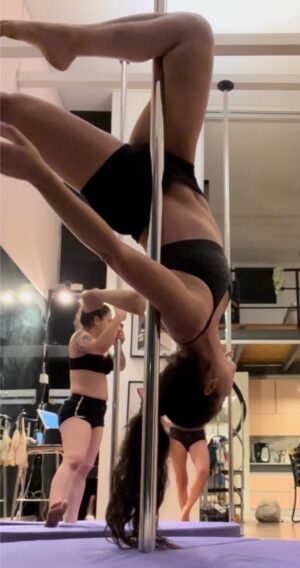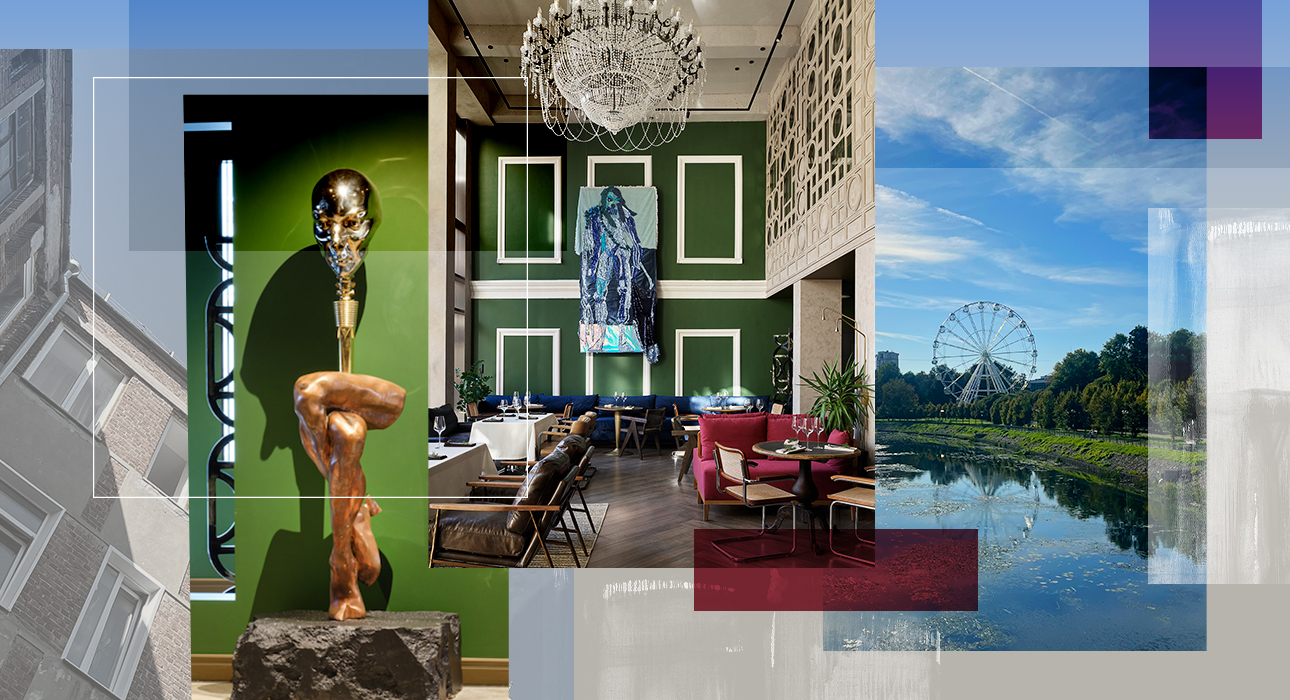Originally practiced in traveling circuses where performers danced languidly around the poles that supported the big top, then by strippers in specialized clubs, pole dance has become a sport and artistic discipline in its own right for a handful of decades. In my personal journey, this practice has come to find its place in a time when I was disconnected (even in conflict) with my body and has allowed me to inhabit it again.
Pole dance, revolution of the Earth around the Sun
I grip the bar firmly with both hands, the contact of the cold metal on my warm palms causing a slight shiver that runs from the base of my spine to the top of my head. I pull myself up and lean my body back, extending my arms. My right leg closes on the bar, like a clip attached to a strand of hair. Held by this single point of contact just behind the knee, I dropped my chest, my neck, my arms. I close my eyes and enjoy these rotations, the revolution of the Earth around the Sun.

“What are you doing on Thursday? Pole dancing? The striptease thing there? »
It has been 5 months since I started taking pole dance lessons. Twice a week, I go to the studio, and I walk in a well-rehearsed ballet, I take off some clothes, coat my hands in liquid chalk before setting my eyes to one of the bars and hugging it like a loved one. It didn’t take longer than the trial lesson that something in me comes to life, a little epiphany, a physical and aesthetic challenge that suddenly gave me a very positive image of my body and its potential.
“What are you doing on Thursday? Pole dancing? The striptease thing there? » Aurélie, a friend, asks me, doubtful and a little presumptuous. Her reflection echoes the trajectory of the discipline’s gain in respectability over time. Pole dancing in its current form originated in the Canadian fairground world in the 1920s. The dancers used the central pole that supports the marquee to perform, unclothed and for an adult audience, what they later called the “hoochie coochie.” . Fairs, the practice will move to nightclubs in the 50s with the boom we know. Therefore it wasn’t until the early 1990s that pole dancing only came out of strip clubs and started being taught as a real sport. “But you know Aurélie, in a strip club, at home, or in a European competition, pole dance and whoever practices it is respectable”.
” Through this practice, I have found an ajar door to my strength and beauty. »
We can legitimately wonder about the pole dance codes and the fact that it involves movements, postures and attitudes whose initial purpose was to seduce, to excite the male gaze. However, the power I feel when I dance around the pole is completely disconnected from it. He lacks this aspect. In the studio, or at home (because yes, I’m the proud owner of a bar in my living room), it’s only my look that counts. What I put on me. It takes up all the space. It is I who “sexualise” myself and it is I who please myself. It had been several years since I no longer considered myself desirable or desirable due to motherhood., time, years accumulating. With this practice, I found a door ajar to my strength and my beauty. On the pole I feel invulnerable, out of my mind and at the same time anchored to me. It explodes and it’s inside, furious and quiet.
So yes, the codes remain those of the male gauzethis reifying perspective of a heterosexual man on women’s bodies and experiences and without a doubtdefinitely, the real revolution will go through a global revision of all these standards. Waiting, to recover them, to use them by evacuating the gaze that forged them first and focusing on your own perspective, it frees you from objectification.
Source: Madmoizelle
Elizabeth Cabrera is an author and journalist who writes for The Fashion Vibes. With a talent for staying up-to-date on the latest news and trends, Elizabeth is dedicated to delivering informative and engaging articles that keep readers informed on the latest developments.




